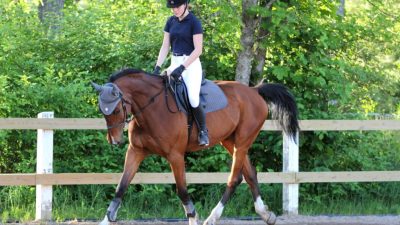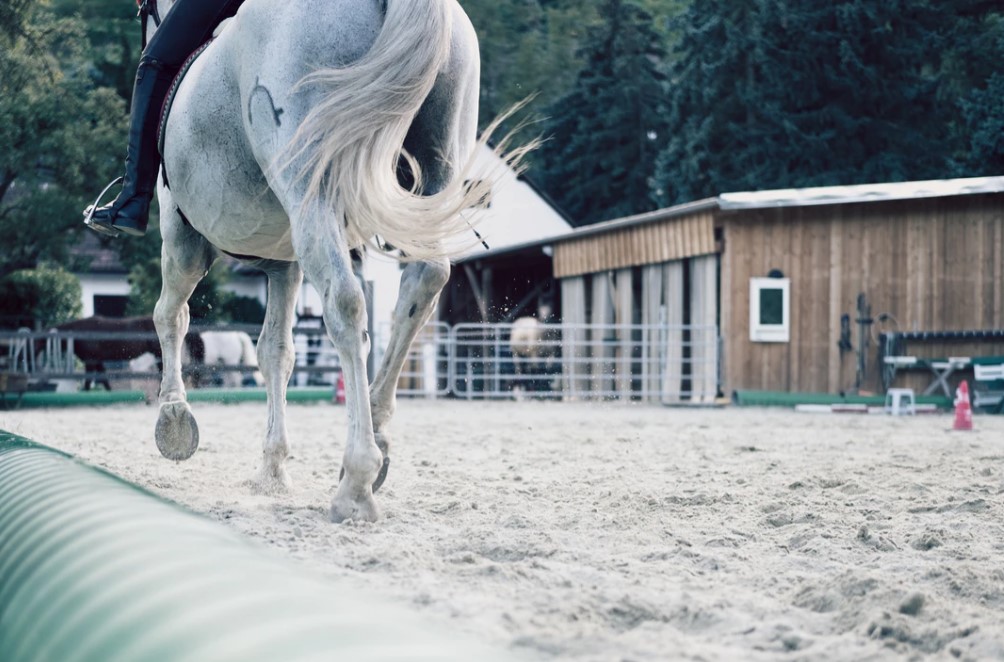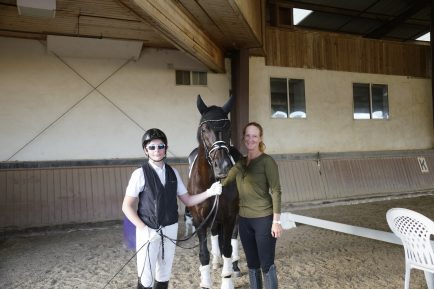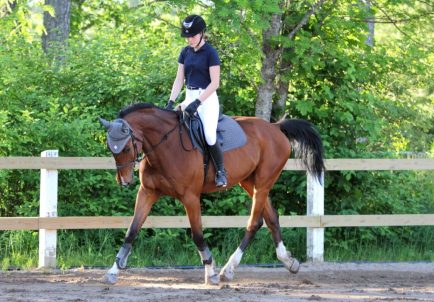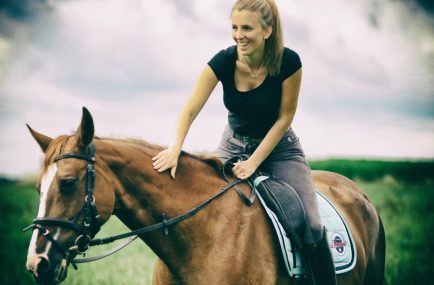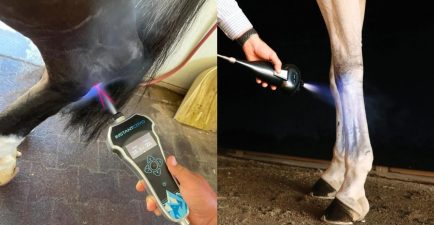Best trimming and shoeing practices to ensure your horse stays sound while traveling the trails
When you’ve looked forward all week to your day off, so you can take to the trails, the last thing you want to find is your horse favoring a foot as he greets you at the pasture fence. Lameness can sideline you and your horse for a day, a week, or worse, and you’re also faced with the possibility of time-consuming specialized care during your horse’s recovery and the added expense of farrier and/or veterinarian intervention.
To give you the best possible chance for hoof trouble-free trail rides, we talked with equine foot gurus Tracy Turner, DVM, MS, Dipl. ACVS, ACVSMR, of Turner Equine Sports Medicine and Surgery, in Big Lake, Minnesota, and Scott Fleming, DVM, CF, of Rood & Riddle Equine Hospital, in Lexington, Kentucky.
Basic Hoof Anatomy
New hoof wall forms continuously at the coronary band, where your horse’s hoof meets skin and hair. Growth averages ¼ inch (.6 cm) per month, so it takes six to 12 months for new growth to reach the hoof’s ground surface. Once damaged, hoof wall doesn’t regenerate; it must be replaced by new growth (or by a rather expensive and labor-intensive farrier application of hoof repair material).
The outer hoof wall is most dense and becomes progressively more elastic toward the inner structures surrounding the coffin bone. Just inside the outer hoof wall is the white line, where laminae (interlocking leaflike tissues) connect the wall to the coffin bone. The white line forms an arc that’s visible on the underside of your horse’s foot when you pick it up. It’s also where your farrier drives the nails that secure shoes to your horse’s hooves.
(For more on hoof anatomy and physiology, read Turner’s article “New Focus on the Foot” at TheHorse.com/13204).
Shoeing Options
When deciding how to care for your trail (or any) horse’s feet, the basic rule is to choose the most natural method possible that will protect sensitive inner structures while allowing them to perform their intended functions. Those functions include supporting the horse’s weight, expanding and contracting as the horse moves, providing a shock-absorbing mechanism, and pumping nutrient-laden blood to the inner hoof structures.
Barefoot
The most natural of all hoof treatments is to trim your horse’s hoof walls every four to six weeks and leave his feet unshod. In many areas, soft, sandy ground (and/or light riding) makes this the most common and desirable practice. It allows your horse’s hoof structures to move as they were designed, promoting development of a strong frog and bars (the inward folds of the hoof wall, located on either side of the frog). And, going barefoot provides good traction (and money savings) as well.
Sans steel accessories, barefoot horses are also less likely to injure themselves when they accidentally strike opposing legs while in motion. They’re also less likely to injure stablemates (or you!) when playing or fleeing.
But if you live in an area with hard or rocky ground, shoes might be called for. “We have an area of dunes where a lot of trail horses do go barefoot,” says Turner. “But for others, something on the bottom of the foot is necessary to prevent excessive wear. It has to be an individual decision that considers the ability to maintain soundness and hoof integrity. Most common is the good old steel shoe.”
Front shoes
If your horse needs minimal protection, you might want to consider applying front shoes. Turner notes that horses carry most of their weight (60%) on their front end. Consequently, some horses might experience more injuries in front and need shoes for protection or therapeutic reasons. But if you find that your horse’s hooves wear unevenly or faster than they grow, or if your horse is prone to sole injuries in his hind feet, you’ll want to have shoes on all four feet.
Shoes all around
Fleming says that for the average trail horse, steel shoes all around are the go-to. But one problem he sees frequently in trail horses is pulled shoes. “When I set up a horse I know is going to be ridden frequently on the trail or varying terrain, I shoe with a hunter fit,” he says. “This fit has a conservative amount of expansion around the hoof. This reduces but doesn’t eliminate the chance of the edge of the shoe being stepped on or hung on something. Due to the minimal expansion offered by the shoe, a decreased interval between shoeings is necessary. If you let it go too long, the hoof could overgrow the shoe.”
Solar injuries (bruises and punctures) are potential problems for trail horses ridden in rocky conditions. Fleming leaves more sole in these horses’ toe area—where the tip of the coffin bone lies—than he would for some disciplines. “Also, conservative yet appropriate trimming of the frog and the bars helps maintain the foot’s structural integrity,” he says.
“For horses that naturally lose more of their sole than others through attrition, leather or plastic pads can mitigate sole injury,” he adds. And for extra grip on dirt you can use a full swedge, a tough steel shoe that features a more aggressive outer rim for improved traction and stability.
Added traction
For riding on ice, hard-packed snow, or slippery or rocky terrain, traction devices can help make your horse more sure-footed and also provide longer shoe life. Some options include:
- Borium: Farriers melt chunks of this high-traction metal onto the traditional shoe in puddles. It’s best for use on horses ridden on pavement and frozen ground. “The biggest use in my area is for sledding and skijoring (where the horse pulls a sleigh or a person on skis, respectively) and for ice and slick snow pack,” says Turner. Possible drawbacks include contact injuries and excessive nail hole wear (due to the shoe’s grabbing power) that can damage the hoof wall as well as stall and trailer floors, aisle mats, and/or pavement.
- Studs: Tap- or screw-in studs can be applied to metal shoes.
- Calks: These keg (standard metal) shoes come with toe and heel cleats.
- Tungsten: Ready-made tungsten carbide pins are similar to calks, but they require a drill to apply instead of a forge and metal-working tools.
Full-foot protection
Then there’s the equine equivalent to a hiking boot: Hoof boots provide protection for the entire hoof wall and sole. And because you don’t need to call on your farrier to apply hoof boots, they’re good selective-use shoes for horses that usually go barefoot, and they’re handy to pack in your saddle bags or trailer in case your regularly shod horse throws a shoe out on the trail. Manufacturers tout them as lightweight, and they don’t leave holes in your horse’s hoof wall. They allow more natural hoof flexion and movement, they cushion against concussion, and they come with various levels of traction. They’re also available with winter studs for added traction.
However, Fleming and Turner caution boot users to closely monitor their horse’s heel bulb and coronary band areas, where the boots can rub if they don’t fit well.
Other alternatives
Occasionally, farriers will recommend using glue-on shoes if the horse’s wall cannot accommodate nails (for instance, where hoof wall has been torn away by a pulled shoe). Fleming adds that some of the glue-on-type shoes made of flexible rubber are good as “spare tires” to carry in the saddlebag or trailer and apply without a farrier or nailing.
Turner says farriers in his area discourage using aluminum shoes because they’re softer than steel and don’t wear well. “Even with our great Rails to Trails system, the ground is pretty hard and they just wear too fast,” he says.
Diet and Health Considerations
Keep in mind that taking care of your horse’s nutritional needs properly will support his feet as well. For horses prone to metabolic syndrome, in which they become insulin-resistant leading up to acute and chronic laminitis, a balanced diet is especially vital. “High-fat, low-starch diets that some companies manufacture, which keep sugar low to fight insulin resistance, can be helpful,” says Fleming. “Exercise is paramount, too—30 minutes two to three times per week can be enough to slowly improve insulin resistance.” Also keep these horses off fresh green pastures to help prevent the laminitis flareups they’re prone to.
He adds that horses with dry, brittle, or cracked feet might benefit from hoof supplements containing biotin and other nutrients. Turner says that in addition to biotin, the sulfur-containing amino acids methionine and cysteine are essential for hoof formation. “Clients need to understand that hoof supplements can make a difference, but they won’t see a difference in just two weeks,” he says, given the hoof’s rate of growth. “It takes months and months to see a benefit.”
Finally, Fleming says horses’ needs will vary by region and whether it’s arid or moist. Work closely with your veterinarian and your farrier to determine what preventive care protocols are best for your particular horse and circumstances.
“Basically,” Fleming concludes, “my top recommendation for best general hoof care is adhering to the fundamentals of sound farriery with medial and lateral hoof balance, minimizing distortions in the hoof wall, and protecting the foot.”
Original article: Trail Horse Hoof Care – The Horse
www.royalequestriancollection.com – check our website to purchase and enjoy our products for your horses and you.










